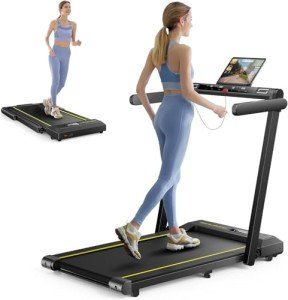7 Things About Incline Treadmill You'll Kick Yourself For Not Knowing
The Benefits and Versatility of Incline Treadmills
In the developing landscape of physical fitness equipment, incline treadmills have securely developed their status as a vital tool for improving cardiovascular exercises. These flexible devices have actually moved beyond their conventional usage, accommodating both amateur exercisers and seasoned professional athletes. This article explores the mechanics, advantages, applications, and considerations surrounding incline treadmills, making it a detailed guide for anybody seeking to incorporate this equipment into their fitness regime.
What is an Incline Treadmill?
An incline treadmill is a cardio machine that features a walking or running surface that can be raised to various angles, enabling users to mimic uphill running or walking. This added incline can substantially change the characteristics of a workout, engaging different muscle groups, increasing caloric burn, and boosting cardiovascular effectiveness. The majority of modern incline treadmills likewise come equipped with advanced innovation, providing users with data on heart rate, calories burned, range traveled, and other pertinent metrics.
Benefits of Using an Incline Treadmill
Incline treadmills use a multitude of benefits that can contribute to an effective workout regimen:
Enhanced Caloric Burn:
- Walking or running on an incline burns more calories compared to working out on a flat surface. The steeper the incline, the more difficult the body has to work, leading to an increased calorie expense.
Muscle Engagement:
- Incline exercises engage different muscle groups, particularly the glutes, hamstrings, and calves. Inclined walking or running can assist tone these muscles better than flat running.
Enhanced Cardiovascular Strength:
- Regularly using an incline treadmill can enhance cardiovascular health by elevating the heart rate more successfully than walking on a flat surface area.
Joint-Friendly Exercise:
- For people who experience pain while running outdoors, incline treadmills offer a regulated environment with the choice to adjust the intensity without the jarring impact of concrete surfaces.
Variety in Workouts:
- The adjustable incline levels enable diverse exercises, preventing uniformity and motivating adherence to exercise routines.
Customization and Convenience:
- Incline treadmills supply settings for various fitness levels, accommodating both low-impact workouts and high-intensity period training (HIIT).
Incline Treadmill Workouts
To take full advantage of the benefits of an incline treadmill, numerous kinds of workouts can be performed:
1. Steady-State Walk/Run
Taking part in a consistent pace over a designated time on a moderate incline (e.g., 3-5 degrees) is reliable for enhancing cardiovascular endurance.
2. Interval Training
Mixing periods of high-intensity effort with healing periods can greatly improve cardiovascular fitness and caloric burn. For example:
- 5 minutes at a high incline (8-15 degrees)
- 2 minutes at a flat surface
- Repeat for 20-30 minutes
3. Hill Repeats
This involves setting the incline to its optimum level and repeating much shorter bursts of effort at that angle.
- 1 minute at maximum incline
- 2 minutes recovery on a flat surface area
- Repeat 5-8 times
4. Endurance Challenge
Set the treadmill to a moderate incline and constantly stroll or jog for an extended duration, aiming to increase time gradually.
Safety Considerations
While incline treadmills are helpful, unique factors to consider ought to be required to avoid injury:
- Proper Footwear: Wearing proper running shoes is important to supply proper assistance and traction.
- Hydration: Keeping hydrated throughout exercise is vital, especially for prolonged exercises.
- Listening to Your Body: Users ought to bear in mind their body's signals and prevent pushing beyond their limits.
Frequently Asked Questions About Incline Treadmills
1. Can beginners use incline treadmills?
Yes, incline treadmills are suitable for all physical fitness levels. Beginners ought to start with a low incline and slowly increase both the incline and period of the workout as they get self-confidence and fitness.
2. Do incline treadmills take up more space than basic treadmills?
Typically, incline treadmills do not take up significantly more space than regular treadmills. However, it's advisable to examine the dimensions when purchasing or when putting one in your house fitness center.
3. Are there specific workouts that should be prevented on incline treadmills?
Balance exercises, such as those that require unexpected sideways movements or quick dives, ought to be prevented as they can increase the threat of falling.
4. How frequently should I use an incline treadmill?
Using an incline treadmill 3-5 times a week is typically suggested for optimal results, but individual objectives and physical fitness levels should identify frequency.
5. Is Home Treadmills to walk or run on an incline treadmill?
Both walking and operating on an incline are advantageous, and the option depends on your physical fitness level, preferences, and objectives. Walking on an incline is lower impact, while running challenges your cardiovascular system more.
In conclusion, incline treadmills represent an effective and versatile tool for people seeking to improve their physical fitness level. Whether utilized for walking, running, or high-intensity training, the benefits of incline training are significant in regards to caloric burn, muscle engagement, and cardiovascular health. For anyone considering an upgrade to their exercise regular or trying to find a compact exercise option in your home, investing in an incline treadmill might be one of the most effective options they can make. With a variety of personalized exercises and versatility to different physical fitness levels, incline treadmills can assist users attain their physical fitness goals efficiently and sustainably.
